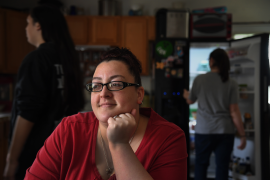By Jane Norman, CQ HealthBeat Associate Editor
September 12, 2012 -- Because more young adults, the very poor, and people older than 65 are being covered, the percentage of Americans who lack health insurance dropped to 15.7 percent in 2011, compared to 16.3 percent in 2010, U.S. Census Bureau officials recently announced.
The number of people without insurance declined to 48.6 million in 2011 compared to 50 million in 2010, according to the agency's annual Current Population Survey.
It marked the first time since 2007 that the census has found a decline in the uninsured rate. That year, 15.3 percent of Americans were without insurance. Since then, in the midst of the economic downturn and job losses, the share of the population without coverage has climbed.
More gains in insurance coverage are expected after the health care overhaul law is fully implemented in 2014.
The uninsured rate improved considerably in 2011 among Americans age 19 to 25, who, under the health care law (PL 111-148, PL 111-152), now may be covered on their parents' insurance policies. The census found that 27.7 percent of the young adults in that age bracket lacked insurance in 2011, compared to 29.8 percent in 2010.
David Johnson, chief of the social, economic and housing statistics division at the census, estimated that about 40 percent of the decline in the uninsured could be tracked to the health care law.
But Johnson wouldn't tie the entire change directly to the law, saying that some of the newly insured may have found coverage through other means. He said the share of young adults with health insurance grew by 4 percentage points from 2009 through 2011, when young adult coverage was in effect for the full year.
Those between the ages of 35 and 44 also had increased insurance coverage. But Johnson said there's not enough information available yet to show why they are gaining coverage and whether the increased coverage is coming through public programs or private insurance.
In a reflection of the ongoing economic problems and the aging population, the percentage of people covered by government health insurance—either Medicare or Medicaid—increased from 31.2 percent in 2010 to 32.2 percent in 2011. The number of people receiving insurance through government programs increased to 99.5 million in 2011, compared to 95.5 million in 2010.
Broken down, the percentage of the population using Medicaid coverage for their health care—which means they had a very low income level—grew from 15.8 percent in 2010 to 16.5 percent in 2011. The number of people receiving Medicaid grew from 48.5 million in 2010 to 50.8 million in 2011, despite efforts by many states to trim their Medicaid rolls in the face of budget crises.
As for Medicare, the percentage of the U.S. population enrolled in the program for the elderly and disabled rose to 15.2 percent in 2011 from 14.6 percent in 2010. Numbers grew to 46.9 million in 2011 compared to 44.9 million in 2010.
The percentages of non-Hispanic whites, blacks and Asians without health insurance declined, though the rate among Hispanics remained about the same.
Supporters of the health care law said it's clear that it is helping Americans obtain coverage already. "The fraction of people with health insurance coverage rose in 2011, and many age, race, ethnic and income groups had fewer uninsured," said Rebecca M. Blank, acting secretary of Commerce, in a written statement. "The president has taken a number of steps since 2009 that was critical to these higher levels of health insurance coverage, including increasing the Children's Health Insurance Program (CHIP) and passage of the Affordable Care Act."
Census officials also said that 63.9 percent of people were covered by private health insurance in 2011, which was not statistically different from 2010. "This was the first time in the last 10 years that the rate of private health insurance coverage has not decreased," officials said, perhaps signaling a pause in a long-running erosion in private coverage that is largely employer-based.
The Current Population Survey also includes information on U.S. income and poverty.
- Census Report (pdf)


